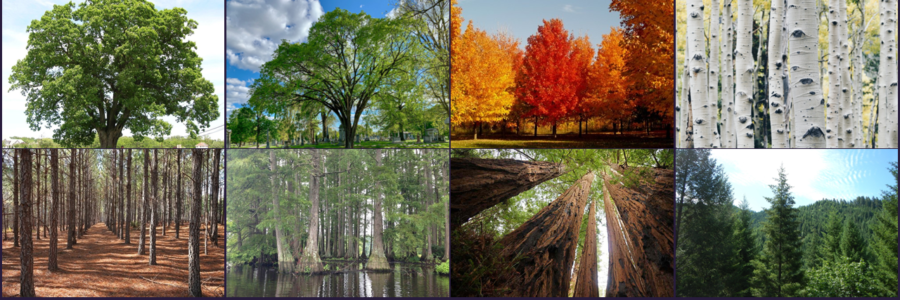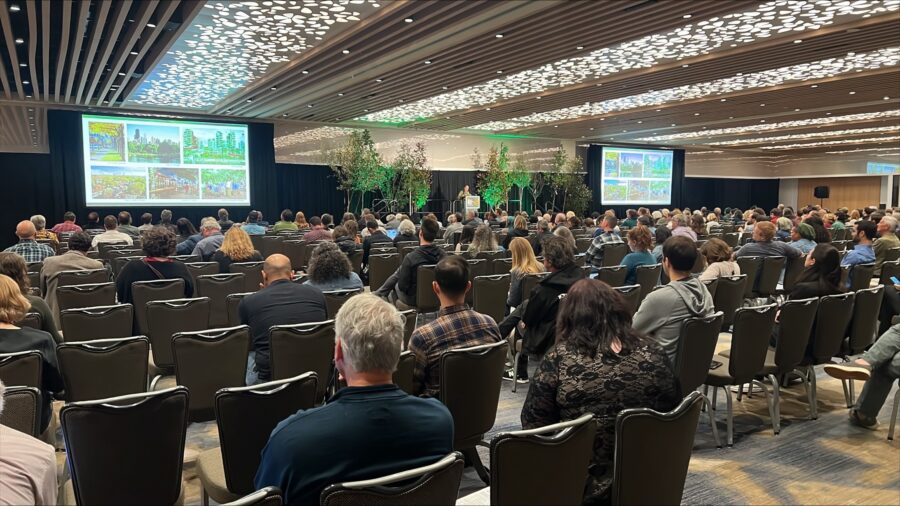By: Julie Foster
Every time I travel to New York I’m reminded of the O. Henry quote, “It will be a great place if they ever finish it.” The city is in a perpetual cycle of repair and construction, with scaffolding seemingly holding Manhattan together. Strangely, this ongoing state of transformation creates an ideal backdrop for a global hub of innovation, opportunity and resilience. This is precisely why it’s such an excellent city to host Climate Week.
New York Climate Week is the largest gathering of nature and climate leaders in the United States. Attendees range from scientists to corporate sustainability experts to policy wonks. Much like the city itself, their work toward addressing biodiversity loss and climate change appears as if it will never be finished. Each year new challenges arise, unprecedented environmental disasters occur, corporate and government commitments fall short, and then the goalpost moves.
I prefer to view this perpetual “work in progress” in a positive light. It provides ground for innovation, opportunity and resilience. This is shown in the growing momentum for nature-based solutions to address challenges.
As I visited panels and sessions from the Nest Climate Campus, Nature Positive Hub, the Climate Science Fair, and other side events, I heard about efforts to decarbonize sectors and transition to a circular economy to reduce emissions. I also heard nature rise on the agenda as a critical contributor to mitigating climate change and curbing biodiversity loss.
Why Nature Matters at Climate Week
The Nature Conservancy led a study that estimates one-third of the emission reductions needed by 2030 to remain below 1.5 can be provided by natural climate solutions. This must be complemented by aggressive decarbonization efforts to succeed, which is why seeing nature share the stage with climate tech solutions is so promising.
The call to not ignore nature is spreading. A White House report from November 2022 outlines opportunities to accelerate nature-based solutions stating, “America’s forests absorb carbon dioxide at a rate equal to 10% of U.S. annual greenhouse gas emissions. . . . As we aggressively invest in emissions reductions through electric vehicles, clean energy, and industry, we must as aggressively invest in forests, urban parks, coastal wetlands, and other ecosystems.”
We are facing a once-in-a-lifetime opportunity thanks to the Inflation Reduction Act (IRA) and Bipartisan Infrastructure Law (BIL). With substantial government investment, business commitment, and emerging scientific insights, this is a pivotal moment for restoration.
Despite the momentum, doubts and skepticism about forest restoration as a climate solution persist. It is natural to feel frustrated by the slow pace of action and the time it takes to see results. It has left many of us feeling the need to play defense and remain in a perpetual state of repair. If you look past the metaphorical scaffolding, you can see the opportunity and resiliency. The scrutiny has raised lessons in effective communication, fostered new partnerships and fueled innovation.
The 1t.org US Chapter collaborated with the Doris Duke Foundation and American Forest Foundation to convene over thirty leaders from across sectors for a dialogue on this very topic. We discussed how to remain resilient in the face of scrutiny to identify key areas of improvement. Stay tuned for updates on how we will use our unique platform to unify messaging about the importance of trees and forests in the United States.
New York’s ever-changing landscape reflects the dynamic nature of addressing the twin biodiversity and climate crises. Although it may never truly feel “finished,” the progress toward addressing these challenges has never looked more promising. Last week featured several key moments and announcements for the 1t.org US community on how we are contributing to this progress.
Updates from 1t.org US pledges and key takeaways by sector:
Corporations:
• The Taskforce on Nature-Related Financial Disclosures (TNFD) announced its final ‘Recommendations for nature-related risk management and disclosure.’ These recommendations provide guidance to corporations on incorporating nature-related risk assessments into their strategies by helping them identify, measure, and disclose their environmental assets.
•In partnership with the Climate Policy Initiative (CPI), Salesforce announced the Corporate Climate Finance Playbook and a $8.3 million grant towards climate justice and nature-based solutions.
•The World Economic Forum, in collaboration with Bain & Company, released Scaling Voluntary Carbon Markets: A Playbook for Corporate Action. This report helps corporations navigate the complexities of VCM to act now.
Government:
•President Biden launched the American Climate Corps, aiming to train 20,000 young people for climate resilience jobs, including forest management.
•On the Climate Group mainstage, California Governor Gavin Newsom sat down with The New York Times’ David Gelles. Gov. Newsom announced legal action against oil companies for citing the lives lost in Paradise, CA to the Camp Fire in 2018. He also shared he will be signing a bill that will require 5,000+ companies in California to report their global greenhouse gas emissions and disclose the climate risks their businesses face.
•The USDA invests $1 billion for nearly 400 projects. Agriculture Secretary Tom Vilsack announced the U.S. Forest Service is awarding $1 billion+ in grants “to plant and maintain trees, combat extreme heat and climate change, and improve access to nature in cities, towns, and suburbs where more than 84% of Americans live, work, and play.”
Non-Profits:
•Prince William unveiled 15 global finalists for the Earthshot Prize—including Acción Andina, co-founded by Constantino Aucca Chutas, President of Acción Andina, and 1t.org Advisory Councilmember Florent Kaiser, CEO of Global Forest Generation. Acción Andina works closely with local communities on restoration in the high Andes. Since 2018 they have restored over 4,000 hectares of Andean forests and protected more than 11,000 hectares of native forest.
•American Forest Foundation published a report, Boosting the Power of Corporate Investment in the Fight Against Climate Change. The report delves into concepts including innovative financing, carbon credit integrity, and the profound contributions of America’s diverse family forest owners in the fight against climate change
•During Climate Week, the Arbor Day Foundation convened the Evergreen Alliance to meet to discuss biodiversity and how trees can help foster healthy ecosystems.



